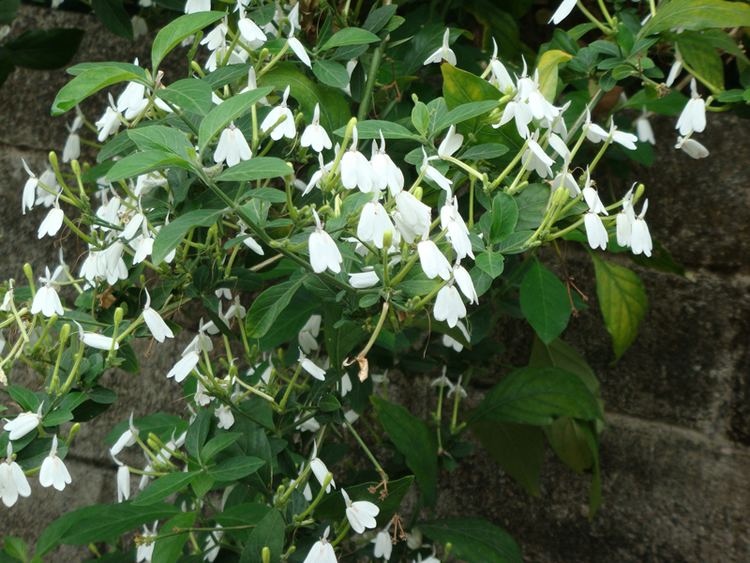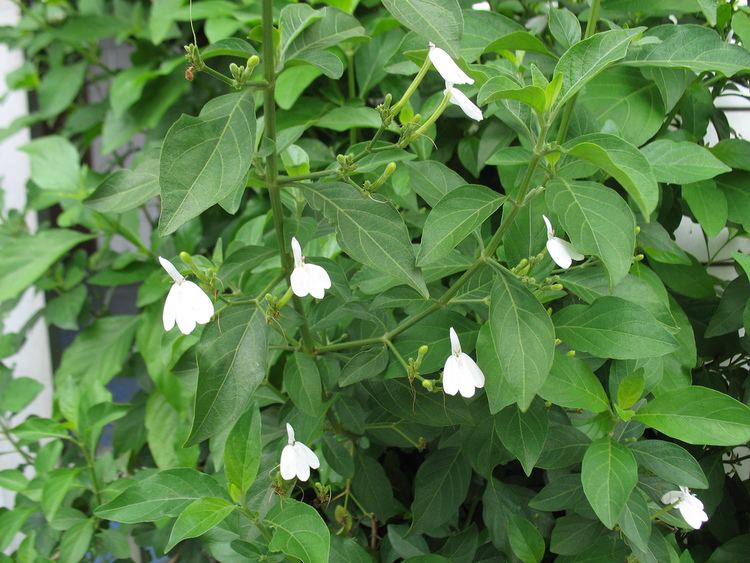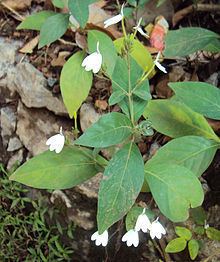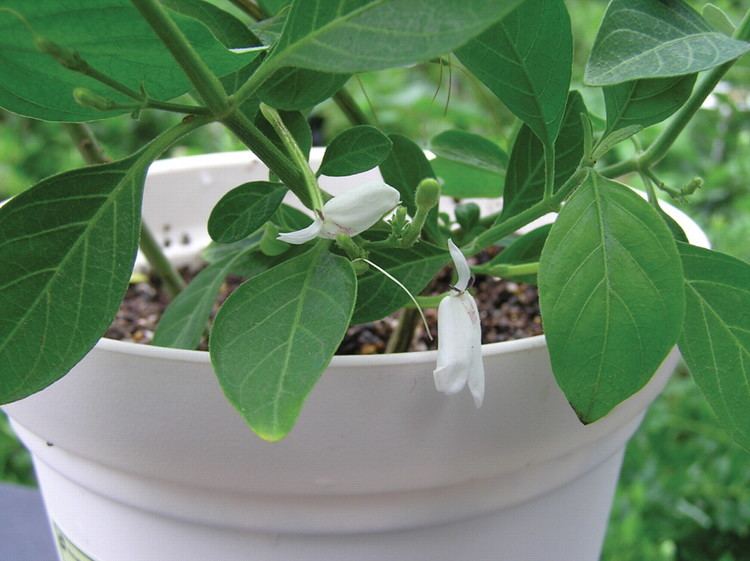Higher classification Rhinacanthus | Subfamily Acanthoideae Scientific name Rhinacanthus nasutus Rank Species | |
 | ||
Similar Rhinacanthus, Acanthaceae, Acanthus ebracteatus, Suregada multiflora, Barleria lupulina | ||
Rhinacanthus nasutus
rhinacanthus nasutus
Botanical information

Native to India, this useful plant is a slender, erect, branched, somewhat hairy shrub 1–2 m in height. The leaves are oblong, 4–10 cm in length, and narrowed and pointed at both ends. The inflorescence is a spreading, leafy, hairy panicle with the flowers usually in clusters. The calyx is green, hairy, and about 5 mm long. The corolla-tube is greenish, slender, cylindric, and about 2 cm long. The flowers is 2-lipped; the upper lip is white, erect, oblong or lancelike, 2-toothed at the apex, and about 3 mm in both length and width; and the lower lip is broadly obovate, 1.1-1.3 cm in both measurements, 3-lobed, and white, with a few, minute, brownish dots near the base. The fruit (capsule) is club-shaped and contains 4 seeds.
Contents
Uses

R. nasutus has been used to treat numerous diseases such as eczema, herpes, pulmonary tuberculosis, hepatitis, diabetes, hypertension, and different types of skin diseases.
It is useful in treating snake bites.

Rhinacanthus nasutus is known for its antioxidant property, Research has shown that it has high potential to treat a number of neurodegenerative diseases - dementia, stroke, Huntington’s disease, Parkinson’s disease and Alzeheimer's disease.
Rhinacanthus nasutus serves as a potential agent for controlling Aedes aegypti and Culex quinquefasciatus.
Extracts of R.nasutus showed antifungal , antibacterial, antiviral, anticancer,antiinflammatory, antidiabetic and antiproliferative activities.

